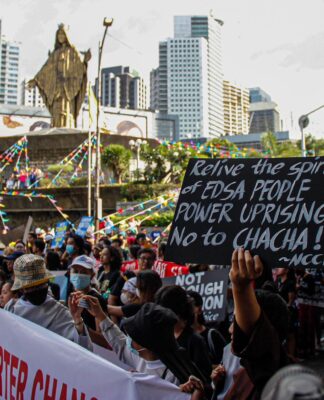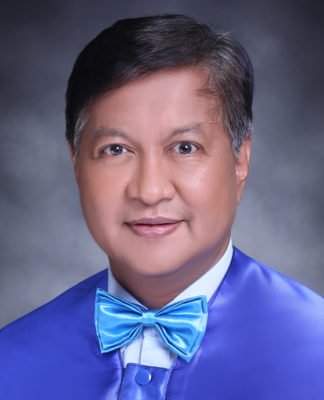 SAVING lives inside the emergency room was Felicitas Laron-Cacanindin’s initial dream.
SAVING lives inside the emergency room was Felicitas Laron-Cacanindin’s initial dream.
But frequent spells of nausea after chemistry classes forced her to embark on another career that would have her deal with lives in another venue: the court room.
Instead of using scalpels and stitches, Cacanindin performs her own dose of heroism by thudding a wooden mallet as presiding judge of Branch 19 of the Metropolitan Trial Court of Manila.
Cacanindin’s daily schedule as a judge includes hearing and deciding cases and acquitting or convicting accused persons in criminal cases.
“This is the culmination of my career as a lawyer. Thus, I know, more or less, how the plaintiff, defendant, complainant, and accused think,” Cacanindin said.
Having diverse experiences in law, Cacanindin applied as a judge at the Judicial and Bar Council (JBC) in 2006.
After the preliminary screening by the JBC, her named was submitted to Malacanang that later made the appointment.
Like all first-timers, Cacanindin admitted that she had butterflies in her stomach the first day. But she overcame her fears with focus and determination.
“I had more or less 25 cases on my first day, which was intimidating. But I was able to overcome it because I believed that I was well-equipped with the knowledge and expertise as a judge,” Cacanindin said.
It was not an easy climb for Cacanindin. First and foremost, she had to face the rigors of studying law. Considering that her pre-law course was B.S. General, which she finished in UST in 1974, she had much difficulty shifting to law studies.
“I had to study double-time and get acquainted with a wide array of legal terms,” she said.
She said her favorite professor was Faculty of Civil Law Dean and former Supreme Court administrator and Commission on Elections chairman Alfredo Benipayo, whom she remembered as competent and patient.
“He’s also very handsome,” Cacanindin added.
She said she put her heart and mind to law studies and always came to class prepared. She graduated in 1978 and passed the bar a year after.
Immediately after her oath, she joined the National Food Authority (NFA) as corporate lawyer.
In 1991, she left the NFA to become a pro bono lawyer at the Public Attorney’s Office (PAO), an agency of the Department of Justice that provides free legal assistance to those who cannot afford it.
“It has been my cherished dream to serve the poor. I even promised myself that if I passed the bar, I would serve the indigents,” Cacanindin said.
Having a soft spot for the less fortunate, a trait influenced by her Thomasian roots, Cacanindin said she considers the cases in which she defended pauper-litigants as the defining point of her career as a lawyer.
“I consider defending them as the most exciting part of my career,” she said.
“The feeling of seeing the indigents expressing their gratitude when they are acquitted is indescribable,” Cacanindin added.
In 2000, Cacanindin became a Quezon City public prosecutor.
In 2002, she became a family court prosecutor, in which she handled annulment cases as well as cases involving young people below 16 years old. Much later, she applied to become a judge.
Now a full judge, Cacanindin said she makes sure to cultivate the virtues and ideals that her alma mater has instilled upon her — fear of God, passion for work, generosity, and honesty.
“UST made me a real Thomasian and I appreciate it a lot,” the lady judge said.















